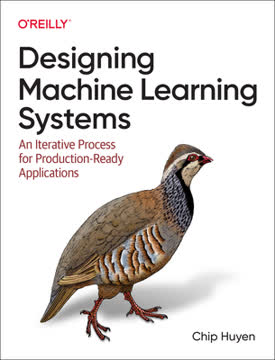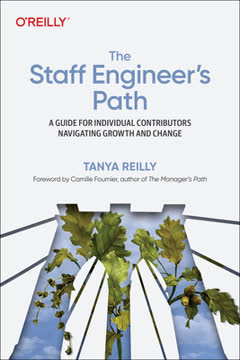Key Takeaways
1. Distributed systems face unique challenges due to network unreliability
The consequences of these issues are profoundly disorienting if you're not used to distributed systems.
Network uncertainty. Distributed systems operate in an environment where network failures, delays, and partitions are common. Unlike single-node systems, there's no guarantee that a message sent will be received, or when it will arrive. This uncertainty forces distributed systems to be designed with fault tolerance and resilience in mind.
Partial failures. In a distributed system, some components may fail while others continue to function. This partial failure scenario is unique to distributed systems and significantly complicates system design and operation. Developers must account for scenarios where:
- Nodes become unreachable due to network issues
- Messages are lost or delayed
- Some nodes process requests while others are down
Consistency challenges. The lack of shared memory and global state in distributed systems makes maintaining consistency across nodes difficult. Each node has its own local view of the system, which may become outdated or inconsistent with other nodes' views.
2. Clocks and time synchronization are problematic in distributed environments
There is no such thing as a global, accurate time that a distributed system can use.
Clock drift. Physical clocks in different machines inevitably drift apart over time. Even with regular synchronization attempts, there's always some degree of uncertainty about the precise time across a distributed system. This drift can lead to:
- Ordering problems in distributed transactions
- Inconsistent timestamps on events
- Difficulty in determining cause-and-effect relationships
Synchronization limitations. While protocols like NTP (Network Time Protocol) attempt to synchronize clocks across machines, they are subject to network delays and cannot provide perfect synchronization. The uncertainty in clock synchronization means that:
- Timestamps from different machines cannot be directly compared
- Time-based operations (e.g., distributed locks) must account for clock skew
- Algorithms relying on precise timing may fail in unexpected ways
Logical time alternatives. To address these issues, distributed systems often use logical clocks or partial ordering mechanisms instead of relying on physical time. These approaches, such as Lamport timestamps or vector clocks, provide a way to order events consistently across the system without relying on synchronized physical clocks.
3. Consensus is crucial but difficult to achieve in distributed systems
Discussions of these systems border on the philosophical: What do we know to be true or false in our system?
Agreement challenges. Reaching consensus among distributed nodes is a fundamental problem in distributed systems. It's essential for tasks like:
- Electing a leader node
- Agreeing on the order of operations
- Ensuring consistent state across replicas
However, achieving consensus is complicated by network delays, node failures, and the potential for conflicting information.
CAP theorem implications. The CAP theorem states that in the presence of network partitions, a distributed system must choose between consistency and availability. This fundamental trade-off shapes the design of consensus algorithms and distributed databases. Systems must decide whether to:
- Prioritize strong consistency at the cost of reduced availability
- Favor availability and accept potential inconsistencies
Consensus algorithms. Various algorithms have been developed to address the consensus problem, including:
- Paxos
- Raft
- Zab (used in ZooKeeper)
Each has its own trade-offs in terms of complexity, performance, and fault tolerance.
4. Distributed transactions require careful design to maintain consistency
ACID transactions are not a law of nature; they were created with a purpose, namely to simplify the programming model for applications accessing a database.
ACID properties. Distributed transactions aim to maintain the ACID properties (Atomicity, Consistency, Isolation, Durability) across multiple nodes. This is challenging because:
- Atomicity requires all-or-nothing execution across nodes
- Consistency must be maintained despite network partitions
- Isolation needs coordination to prevent conflicting operations
- Durability must be ensured across multiple, potentially failing nodes
Two-phase commit. The two-phase commit (2PC) protocol is commonly used for distributed transactions. It involves:
- Prepare phase: Coordinator asks all participants if they can commit
- Commit phase: If all agree, coordinator tells all to commit; otherwise, all abort
However, 2PC has limitations, including potential blocking if the coordinator fails.
Alternative approaches. To address the limitations of strict ACID transactions in distributed systems, alternative models have emerged:
- Saga pattern for long-running transactions
- BASE (Basically Available, Soft state, Eventually consistent) model
- Compensating transactions for handling failures
5. Replication strategies balance data availability and consistency
There are several ways to handle replication, and there are some important trade-offs to consider.
Replication models. Distributed systems use various replication strategies to improve availability and performance:
- Single-leader replication
- Multi-leader replication
- Leaderless replication
Each model offers different trade-offs between consistency, availability, and latency.
Consistency levels. Replication introduces the challenge of maintaining consistency across copies. Systems often provide multiple consistency levels:
- Strong consistency: All replicas are always in sync
- Eventual consistency: Replicas converge over time
- Causal consistency: Preserves causal relationships between operations
Conflict resolution. When allowing multiple copies to be updated independently, conflicts can arise. Strategies for resolving conflicts include:
- Last-write-wins (based on timestamps)
- Version vectors to track update history
- Application-specific merge functions
6. Partitioning data across nodes enables scalability but introduces complexity
The main reason for wanting to partition data is scalability.
Partitioning strategies. Data can be partitioned across nodes using various approaches:
- Range partitioning: Dividing data based on key ranges
- Hash partitioning: Using a hash function to distribute data
- Directory-based partitioning: Using a separate service to track data location
Each strategy has implications for data distribution, query performance, and system flexibility.
Rebalancing challenges. As the system grows or shrinks, data may need to be redistributed across nodes. This process, called rebalancing, must be handled carefully to:
- Minimize data movement
- Maintain even data distribution
- Avoid disrupting ongoing operations
Secondary indexes. Partitioning becomes more complex when dealing with secondary indexes. Options include:
- Partitioning secondary indexes by document
- Partitioning secondary indexes by term
Each approach has different trade-offs in terms of write performance and read query capabilities.
7. Fault tolerance is essential but requires thoughtful system design
Working with distributed systems is fundamentally different from writing software on a single computer—and the main difference is that there are lots of new and exciting ways for things to go wrong.
Failure modes. Distributed systems must handle various types of failures:
- Node crashes
- Network partitions
- Byzantine faults (nodes behaving erroneously or maliciously)
Designing for fault tolerance requires anticipating and mitigating these failure scenarios.
Redundancy and replication. Key strategies for fault tolerance include:
- Replicating data across multiple nodes
- Using redundant components (e.g., multiple network paths)
- Implementing failover mechanisms
However, redundancy alone is not sufficient; the system must be designed to detect failures and respond appropriately.
Graceful degradation. Well-designed distributed systems should continue to function, possibly with reduced capabilities, in the face of partial failures. This involves:
- Isolating failures to prevent cascading effects
- Prioritizing critical functionality
- Providing meaningful feedback to users about system status
8. Consistency models offer trade-offs between correctness and performance
Linearizability is a recurrent theme in distributed systems: it's a very strong consistency model.
Consistency spectrum. Distributed systems offer a range of consistency models, from strong to weak:
- Linearizability: Strongest model, appears as if all operations occur atomically
- Sequential consistency: Preserves the order of operations on each client
- Causal consistency: Maintains causal relationships between operations
- Eventual consistency: Weakest model, guarantees convergence over time
Stronger models provide more intuitive behavior but often at the cost of increased latency and reduced availability.
CAP theorem implications. The choice of consistency model is influenced by the CAP theorem:
- Strong consistency models limit availability during network partitions
- Weaker models allow for better availability but may expose inconsistencies
Application considerations. The appropriate consistency model depends on the specific application requirements:
- Financial systems often require strong consistency
- Social media applications may tolerate eventual consistency
- Some systems use different consistency levels for different operations
9. Distributed system design must account for partial failures
In distributed systems, we try to build tolerance of partial failures into software, so that the system as a whole may continue functioning even when some of its constituent parts are broken.
Failure detection. Identifying failures in a distributed system is challenging due to network uncertainty. Common approaches include:
- Heartbeat mechanisms
- Gossip protocols
- Phi-accrual failure detectors
However, it's often impossible to distinguish between a failed node and a network partition.
Failure handling. Once a failure is detected, the system must respond appropriately:
- Electing new leaders
- Rerouting requests
- Initiating recovery processes
The goal is to maintain system availability and consistency despite partial failures.
Design principles. Key principles for building robust distributed systems include:
- Assume failures will occur and design accordingly
- Use timeouts and retries, but be aware of their limitations
- Implement circuit breakers to prevent cascading failures
- Design for idempotency to handle duplicate requests safely
Human-Readable Summary:
This adaptation covers the fundamental challenges and principles of distributed systems. It emphasizes the unique difficulties posed by network unreliability, time synchronization issues, and the need for consensus. The text explores strategies for maintaining consistency in distributed transactions, balancing data replication and partitioning, and designing for fault tolerance. It also discusses the trade-offs involved in choosing consistency models and the importance of accounting for partial failures in system design. Throughout, the adaptation highlights the philosophical and practical considerations that shape distributed system architecture and implementation.
</instructions>
Last updated:
FAQ
What's Designing Data-Intensive Applications about?
- Focus on Data Systems: The book explores the principles and practices behind building reliable, scalable, and maintainable data-intensive applications. It covers various architectures, data models, and the trade-offs involved in designing these systems.
- Enduring Principles: Despite rapid technological changes, the book emphasizes fundamental principles that remain constant across different systems, equipping readers to make informed decisions about data architecture.
- Real-World Examples: Martin Kleppmann uses examples from successful data systems to illustrate key concepts, making complex ideas more accessible through practical applications.
Why should I read Designing Data-Intensive Applications?
- Comprehensive Overview: The book provides a thorough examination of data systems, making it suitable for software engineers, architects, and technical managers. It covers a wide range of topics, from storage engines to distributed systems.
- Improved Decision-Making: By understanding the trade-offs of various technologies, readers can make better architectural decisions for their applications, crucial for meeting performance and reliability requirements.
- Curiosity and Insight: For those curious about how data systems work, the book offers deep insights into the internals of databases and data processing systems, encouraging critical thinking about application design.
What are the key takeaways of Designing Data-Intensive Applications?
- Reliability, Scalability, Maintainability: The book emphasizes these three principles as essential for building robust data-intensive applications.
- Understanding Trade-offs: It highlights the importance of understanding trade-offs in system design, such as the CAP theorem, which states that "you can only pick two out of consistency, availability, and partition tolerance."
- Data Models and Replication: The choice of data model significantly impacts application performance, and the book discusses various replication strategies and their implications for consistency.
What are the best quotes from Designing Data-Intensive Applications and what do they mean?
- "Technology is a powerful force in our society.": This quote underscores the dual nature of technology, serving as a reminder of the ethical responsibilities in building data systems.
- "The truth is the log. The database is a cache of a subset of the log.": This encapsulates the idea of event sourcing, where the log of events is the authoritative source, and the database provides a read-optimized view.
- "If you understand those principles, you’re in a position to see where each tool fits in.": Highlights the importance of grasping fundamental principles to effectively utilize various technologies.
How does Designing Data-Intensive Applications define reliability, scalability, and maintainability?
- Reliability: Refers to the system's ability to function correctly even in the face of faults, involving design strategies to tolerate hardware failures, software bugs, and human errors.
- Scalability: Concerns how well a system can handle increased load, requiring strategies like partitioning and replication to cope with growth in data volume, traffic, or complexity.
- Maintainability: Focuses on how easily a system can be modified and updated over time, emphasizing simplicity, operability, and evolvability for productive team work.
What is the CAP theorem in Designing Data-Intensive Applications?
- Consistency, Availability, Partition Tolerance: The CAP theorem states that in a distributed data store, it is impossible to simultaneously guarantee all three properties.
- Trade-offs in Design: Emphasizes the trade-offs system designers must make, such as sacrificing availability during network failures to prioritize consistency and partition tolerance.
- Historical Context: Introduced by Eric Brewer in 2000, the theorem has significantly influenced the design of distributed systems.
How does Designing Data-Intensive Applications explain data models and query languages?
- Data Models: Compares various data models, including relational, document, and graph models, each with strengths and weaknesses, crucial for selecting the right one based on application needs.
- Query Languages: Discusses different query languages like SQL for relational databases and those for NoSQL systems, essential for effectively interacting with data.
- Use Cases: Emphasizes that different applications have different requirements, guiding informed decisions about data architecture.
What are the different replication methods in Designing Data-Intensive Applications?
- Single-Leader Replication: Involves one node as the leader processing all writes and replicating changes to followers, common but can lead to bottlenecks.
- Multi-Leader Replication: Allows multiple nodes to accept writes, improving flexibility and availability but introducing complexities in conflict resolution.
- Leaderless Replication: Any node can accept writes, improving availability but requiring careful management of consistency.
How does Designing Data-Intensive Applications address schema evolution?
- Schema Changes: Discusses the inevitability of application changes requiring corresponding data schema changes, emphasizing backward and forward compatibility.
- Encoding Formats: Explores various encoding formats like JSON, XML, and binary formats, highlighting trade-offs associated with each for schema evolution.
- Practical Strategies: Provides advice on handling schema changes in real-world applications, ensuring old and new data versions can coexist without issues.
What is the significance of event sourcing in Designing Data-Intensive Applications?
- Immutable Event Log: Involves storing all changes as an immutable log of events, allowing easy reconstruction of the current state by replaying the log.
- Separation of Concerns: Enables multiple views of data from the same log, allowing for easier application evolution over time.
- Auditability and Recovery: Provides a clear audit trail of changes, simplifying recovery from errors by rebuilding the state from the event log.
How does Designing Data-Intensive Applications propose handling network partitions?
- Network Faults: Explains that network partitions can lead to inconsistencies across replicas, complicating distributed system design.
- Handling Partitions: Discusses strategies like the CAP theorem, which states a system can only guarantee two of three properties: Consistency, Availability, and Partition Tolerance.
- Practical Implications: Emphasizes designing systems that tolerate network faults and continue operating effectively.
What are the ethical considerations in Designing Data-Intensive Applications?
- Responsibility of Engineers: Stresses the ethical implications of data collection and usage, including awareness of potential biases and discrimination in algorithms.
- Impact of Predictive Analytics: Discusses risks associated with predictive analytics, urging careful consideration of data-driven decisions and their consequences.
- Surveillance Concerns: Raises concerns about surveillance capabilities, advocating for user privacy, transparency, and control over personal data.
Review Summary
Designing Data-Intensive Applications is highly praised as an essential read for software engineers and developers. Readers appreciate its comprehensive coverage of data storage, distributed systems, and modern database concepts. The book is lauded for its clear explanations, practical examples, and insightful diagrams. Many consider it a mini-encyclopedia of data engineering, offering valuable knowledge for both beginners and experienced professionals. While some find certain sections challenging or overly academic, most agree it provides a solid foundation for understanding complex data systems and architectures.
Similar Books










Download PDF
Download EPUB
.epub digital book format is ideal for reading ebooks on phones, tablets, and e-readers.




